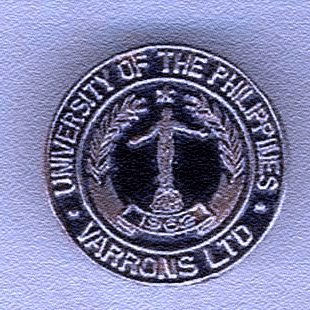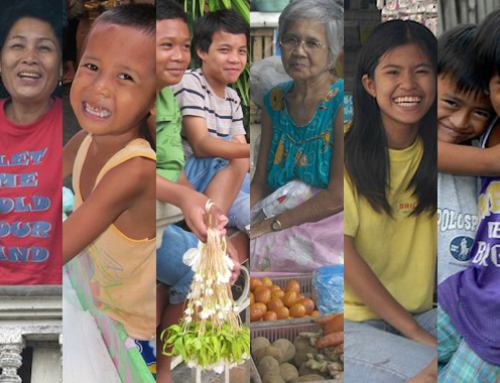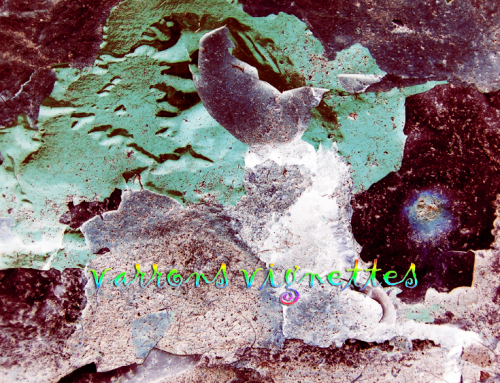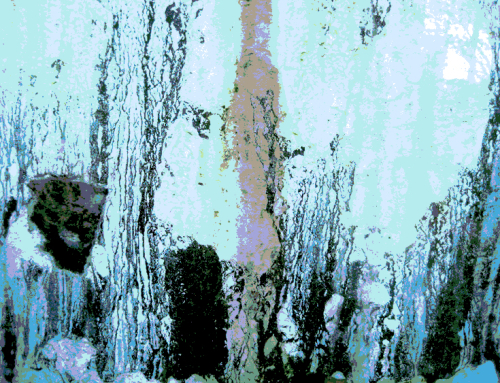by Alfie M. Torres (JAM ’07) and Christian Kevin A. Latiza (Philanthropist ’05)
It is estimated that from 2000 to 2005, the Philippines lost 2.1% of its forest cover every year, the second fastest in Southeast Asia (next to Myanmar) and seventh in the world (Echanove, 2008). This is attributed to pressures from commercial exploitation of forests and population increase, including lifestyle and consumption pattern that put much strain on resources. A greener Philippines for 2016 is one of the priority lists of Philippines President Benigno S. Aquino III. Through the executive order no. 26 issued three years ago, 1.5 billion trees covering about 1.5 million hectares shall be planted nationwide.
Filipinos particularly local people living in the uplands are becoming more vulnerable to the diminishing forest resources. These people add more pressure on the natural resources, being more dependent in order for them to survive. An initiative like NGP is one way that can support a greener Philippines through rehabilitation and management of public forest lands. Tayabasan subwatershed in San Jose, Antipolo City in Rizal province is one of the target sites to be restored by native trees. This has been possible with the generous support of the Philippine Long Distance Telecommunication Smart Foundation (PLDT Smart), Philippine Disaster Recovery Foundation (PDRF) and in partnership with the Philippine Federation for Environmental Concerns (PFEC). One of the strategies of NGP is to harmonize initiatives not only by the government but also the non-government organizations and private agencies working towards conservation and sustainable utilization of natural resources. To make this project a success, PFEC sees community involvement for a worthy development activity. Therefore, Dumagats, particularly members of the Peoples’ Organization called TUPAI, were capacitated on the nursery establishment and wildlings collection. A two-day practical training that aimed the organization to become equipped in the production of 30,000 seedlings that will be taken cared of in the community nursery.
With the facilitation of PFEC Program Coordinator Forester Reynante V. Ramilo, the training on nursery establishment and wildlings collection was successfully completed last 8-9 June 2013. As For. Ramilo said,”the training needs to be conducted as early as June. We cannot afford any delay at this point for we need to raise 30,000 seedlings of native trees by December this year.” This was the reason why PFEC was very determined and time-conscious with this undertaking. PFEC has a long work history with the local people particularly with the Tupai. PFEC believes that one of the keys for a more successful development activity was the synchronicity of science and local indigenous knowledge. None of the two should be taken for granted as they are both essential from planning up to the implementation of the activity. PFEC keeps on providing the science and the organization, as the beneficiary, is responsible on applying appropriate local indigenous knowledge and practices. Under this project, the use of native trees is being promoted in restoring the biodiversity and bringing back the original forest of Tayabasan subwatershed. Consequently while restoring the forests and biodiversity, the organization can also benefit through the sustainable utilization of forest resources as part of its alternative source of livelihood and for personal consumption.
Two foresters served as resource speakers who provided the basic science and practical application in establishing community nursery and in collecting wildings in the field. A total of 30 Dumagats were gathered in the tribal house. Of which, 21 and 9 were males and females, respectively. The module used in the training focused on the concepts and significance of forest nurseries in community development activities and one of the expected outputs of the training is the laid out community nursery. To do so, the resource speakers gave emphasis on the criteria on nursery site selection (i.e. location, size, topography, soil, labor and water supply) and introduced the essential facilities in nursery operations and management. To facilitate the actual lay-outing in the field, part of the exercise was to draft a design of the community nursery in the manila paper. The design includes basic nursery facilities (production and non-production facilities). This is to ensure efficient production of seedlings. Thus, it must be designed in such a way that it will allow smooth and systematic movement of worker, equipment and materials. Carefully planned nursery will save a lot of effort, time and resources. Afterwards, actual lay-outing in the field was made and they were able to delineate the boundaries of the proposed community nursery. They were also able to identify the respective location of different offices (i.e. administration office, storage area, potting shed, etc.) and other essential facilities.
The second part of the training involved the basic operations on seedling production – identification of mother trees as source of seeds and wildlings; and care/maintenance activities in a nursery – which the organization needs to commence its nursery operation. The resource speakers demonstrated the proper selection of mother trees based on the physical characteristics such as height, crown, bole and branching pattern. They emphasized that a superior mother tree must possess good qualities of the aforementioned characteristics. Mother trees are assumed to have good quality progenies or wildlings; therefore, the organization must learn and practice the proper selection of mother trees. Basic techniques on wildlings collection was also discussed in a more assimilated manner. They stressed that collection of wildlings is not an easy task; instead, it requires care and proper handling from place of collection to the nursery. They also emphasized that leaving some wildlings in the area should be the right practice as they would serve as the future regenerations. Further, roots should not be damaged, as much as possible, during picking or uprooting. Leaves must be cut or lessen to reduce transpiration. Lastly, roots must be covered during transport with proper material to prevent drying out due to sudden exposure from the immediate environment. Basic nursery practices such as preparation of potting media, potting, transplanting and proper watering were also discussed. The speakers provided sample seedlings, potting media and poly-ethylene bag to demonstrate the proper techniques on potting and transplanting. Some participants were encouraged to perform the demonstration. Lastly, discussion on common pests and diseases in nursery was tackled. Participants were able to learn the potential pests and disease that they may encounter during seedling production in the nursery. Insects (i.eLepidopterans, Coleopterans and Mantodeans) and snails feed on plant foliage and stem while different species of fungi are responsible to several systemic plant diseases. For insect pests, an organic pesticide was introduced to the participants as an alternative solution for pest attack. The said organic pesticide is made of traditional plant with insect-repellant characteristics such as chili (capsaicin) and neem tree (azadirachtin). To prevent growth of fungi, participants were reminded to maintain the nursery area with good drainage and ventilation to make sure that seedlings will have sufficient moisture and aeration.
TUPAI has only until December of this year to deliver the 30,000 seedlings for NGP. The local DENR office concerned will buy the said amount of seedlings for an agreed price. The organization should double up its effort to ensure that the implementation of activities is on track. To guide the organization, the resource speakers made a Gantt chart of activities involving the necessary activities from June to December 2013. During the process, participants were asked about the deadline of each identified activity. The result shows that the key months for the whole process of seedling production are July, September, and December. The organization should have an established nursery as early as first week of July. Simultaneously, some members should start the identification of mother trees, collection of wildlings, preparation of potting media and potting activities. In September, hardening-off of previously planted seedlings should be started, which means seedlings are being prepared for outplanting. By December, the 30,000 seedlings are assumed to be ready to face a more hostile environment when they are once outplanted.
The training ends with victory but more work awaits to every member of Tupai. Leaders should take first the initiative and should be time conscious for they have only few months left in the preparation for a greener Tayabasan subwatershed. Before the program officially ends, Tupai gave an excellent work to the organizers and resource speakers for being patient, understanding and determined to share the science behind the training, though it requires approximately two and half hours to reach them. Two leaders (President and Vice President) shared their practical learning and thanked everyone for all the support while one member challenged the Tupai particularly the officers to make this project successful. For. Ramilo ends the program with full of responsibilities and hope for TUPAI! Cheers!!!
With this greening project, it is expected that productivity of the subwatershed will increase; supply of wood and agroforestry products will be sufficient, thus, will increase economic activity in the upland and; environment will become more stable through increased forest cover, it will enhanced carbon sequestration, improved water quality and supply, reduced downstream flooding and soil erosion and improved environmental services.
The training was made possible with the generous support of PLDT Smart Foundation, PDRF and with the facilitation of PFEC led by its Program Coordinator For. Reynante V. Ramilo (Noah’s Ark ’92). The foresters who served as resource persons in the training were For. Christian Kevin A. Latiza (Philanthropist ’05) and For. Alfie M. Torres (JAM ’07). It was really a great experience working with Vrods and Sisses towards the achievement of our organization’s objective “to render service to the utmost of its capacity.” Also, we are very fortunate to join Dumagats in supporting the national greening program of the country.
Last Updated on October 12, 2016 by Tudla_Admin




















Leave A Comment